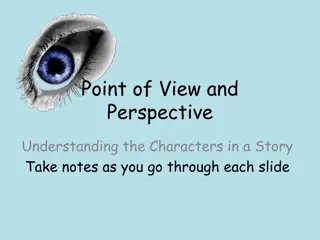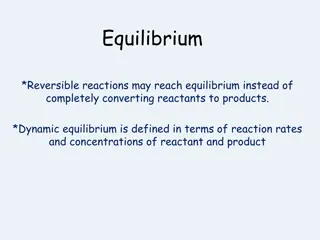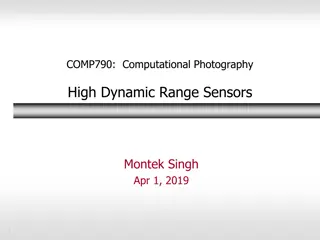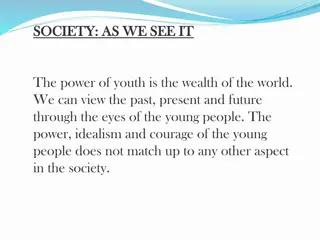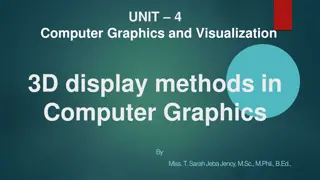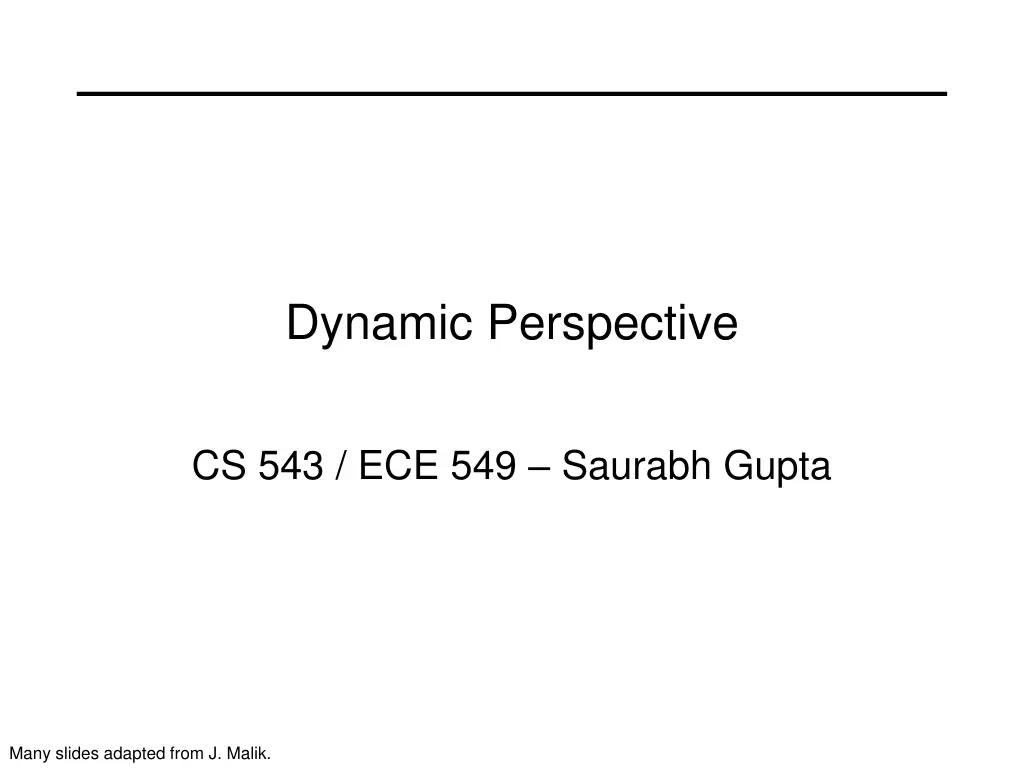
Dynamic Perspective: Understanding Optical Flow and Camera Motion Equations
Explore the concept of optical flow and camera motion equations in dynamic perspective imaging. Learn about the relationship between camera movement and image projection, as well as how points in a scene move relative to camera translations and rotations. Dive into the effects of projection on optical flow and discover the mathematical underpinnings of dynamic perspective equations.
Download Presentation

Please find below an Image/Link to download the presentation.
The content on the website is provided AS IS for your information and personal use only. It may not be sold, licensed, or shared on other websites without obtaining consent from the author. If you encounter any issues during the download, it is possible that the publisher has removed the file from their server.
You are allowed to download the files provided on this website for personal or commercial use, subject to the condition that they are used lawfully. All files are the property of their respective owners.
The content on the website is provided AS IS for your information and personal use only. It may not be sold, licensed, or shared on other websites without obtaining consent from the author.
E N D
Presentation Transcript
Dynamic Perspective CS 543 / ECE 549 Saurabh Gupta Many slides adapted from J. Malik.
Perspective Projection P Y ?? ?,?? ?,?,? ? Z f O y Suppose the camera moves with respect to the world p Point P (?,?,?) in the world moves relative to the camera, its projection in the image (?,?) moves as well. This movement in the image plane is called optical flow. Suppose the image of the point (?,?) moves to (? + ?,? + ?) in time ?, then components of the optical flow. ? ?, ? are the two ?
Outline Relate optical flow to camera motion Special cases
How does a point X in the scene move? Assume that the camera moves with a translational velocity ? = (??,??,??) and angular velocity ? = ??,??,??. Linear velocity of point ? = ?,?,? is given by ? = ? ? ?. ??? ??? ??? ??? ??? ??? ?? ?? ?? ? ? ? =
Now, lets consider the effect of projection ??? ??? ??? ??? ??? ??? ?? ?? ?? ? ? ? = Assume, ? = 1, ? =? ?,? =? ?. ?? ?? ?2, ? = ?? ?? ?2 ? = Substitute ?, ?, ? , from equation above: ?? ?? ?? ?? ?? ?? 1 + ?2 ?? ? ?=1 ?? ? ? ?= 1 0 0 ? ? + 1 (1 + ?2) ? ?
Dynamic Perspective Equations ?? ?? ?? ?? ?? ?? 1 + ?2 ?? ? ?=1 ?? ? ? ?= 1 0 0 ? ? + 1 (1 + ?2) ? ? Translation Component Rotation Component
Optical flow for pure rotation ?? ?? ?? ?? ?? ?? 1 + ?2 ?? ? ?=1 ?? ? ? ?= 1 0 0 ? ? + 1 (1 + ?2) ? ? ?? ?? ?? 1 + ?2 ?? ?? ? ? ?= (1 + ?2) ? We can determine ? from the flow field. Flow field is independent of ?(?,?).
Optical flow for pure translation along Z-axis ?? ?? ?? ?? ?? ?? 1 + ?2 ?? ? ?=1 ?? ? ? ?= 1 0 0 ? ? + 1 (1 + ?2) ? ? ? ? ? ?= ?? ?(?,?) Optical flow vector is a scalar multiple of position vector. Scale factor ambiguity, if ?? ???, and ? ??, optical flow remains unchanged. But, you can get time to collision, ?/??.
Optical flow for impure translation along Z-axis ?? ?? ?? ?? ?? ?? 1 + ?2 ?? ? ?=1 ?? ? ? ?= 1 0 0 ? ? + 1 (1 + ?2) ? ? ??+??? ?(?,?) ? = ??+??? ?(?,?), v =
Optical flow for points on a road Slide by J. Malik
Translating along X-axis in front of a wall Slide by J. Malik
Estimating Optical Flow from Images Aperture Problem
Recap Relate optical flow to camera motion ?? ?? ?? ?? ?? ?? 1 + ?2 ?? ? ?=1 ?? ? ? ?= 1 0 0 ? ? + 1 (1 + ?2) ? ? Special cases Pure rotation / pure translation / time to collision



